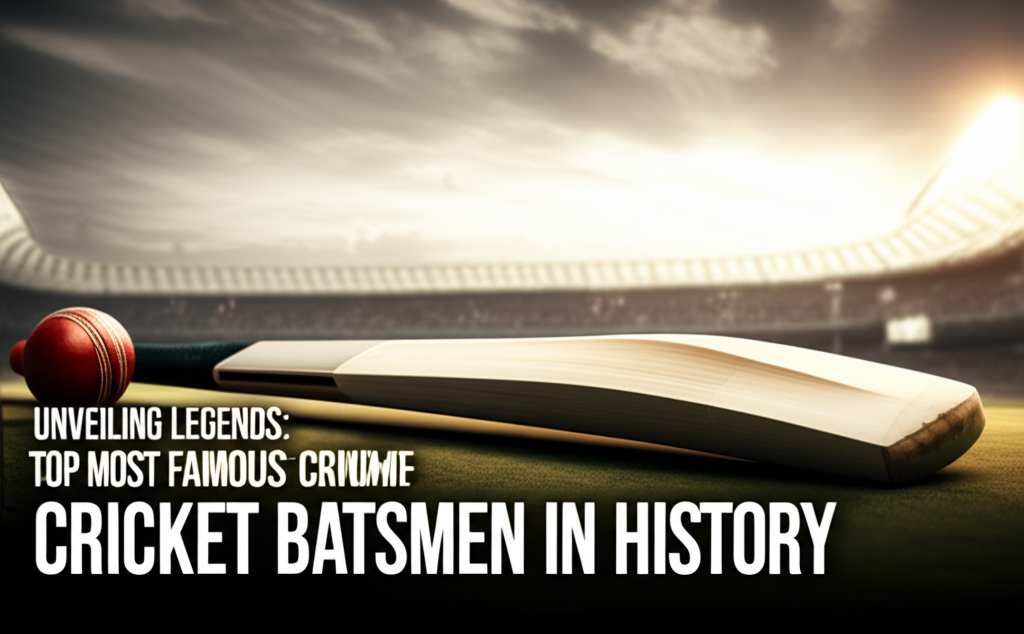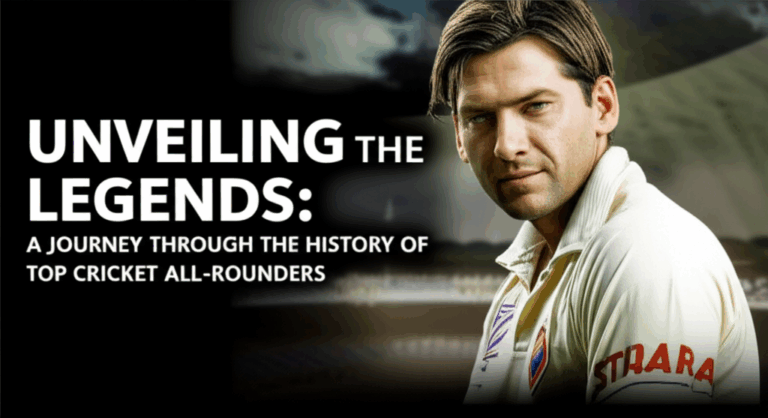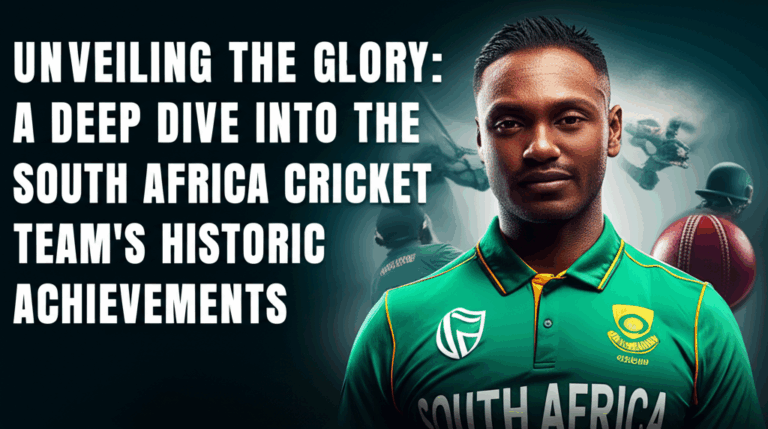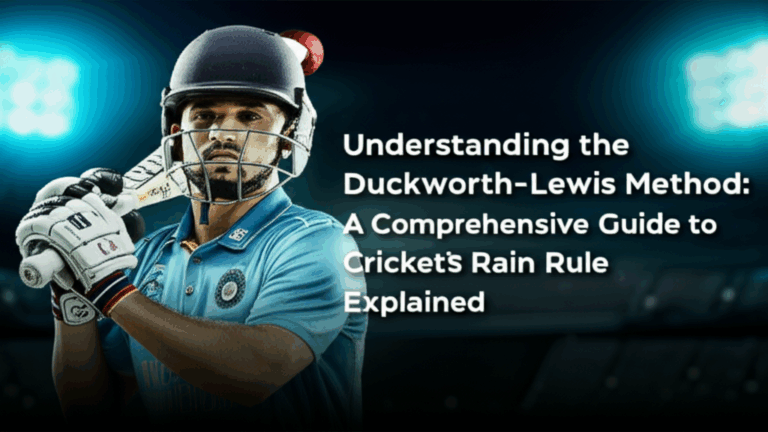
Cricket, a game that transcends boundaries and cultures, has given us a plethora of extraordinary talents. Among them, the batsmen stand out as the artists, painting vivid pictures with their strokes on the canvas of the pitch. Have you ever wondered who the greatest batsmen in cricket history are? What makes them legends, and how do their stats stack up against each other? In this article, we’re going to unveil the legends of cricket, diving deep into the profiles of the most famous batsmen who have graced the game.
We’ll explore the remarkable careers of these players, their unique styles, and the impact they had on cricket. By the end of this journey, you’ll not only have a deeper appreciation for these icons but also understand what sets them apart in the annals of cricket history. Whether you’re a seasoned fan or new to the game, there’s something valuable here for everyone. So, grab your favorite snack, settle in, and let’s get started on this fascinating exploration of cricket’s batting legends!
Understanding the Essence of a Great Batsman
Before we dive into the profiles of our top batsmen, it’s essential to understand what makes a batsman truly great. A successful batsman possesses a unique blend of skill, mental fortitude, and adaptability. They must navigate different pitches, weather conditions, and bowlers, all while maintaining a calm demeanor under pressure. Here are some key attributes of legendary batsmen:
- Technical Skill: Mastery over various batting techniques, including footwork, shot selection, and timing.
- Consistency: Ability to perform at a high level over extended periods, contributing significantly to their team’s success.
- Mental Toughness: Staying focused and composed, especially in high-pressure situations.
- Adaptability: Adjusting their batting style and strategy according to the match situation and opposition.
- Leadership: Inspiring teammates and often leading from the front with their performance.
Key Components of Batting Greatness
Now that we’ve outlined the essential attributes, let’s delve into some of the key components that define the greatness of a batsman. This section will highlight the critical elements that contribute to a batsman’s legacy.
Statistical Dominance
Statistics play a significant role in evaluating a batsman’s career. Metrics like batting average, strike rate, centuries scored, and consistency in different formats (Test, ODI, T20) are crucial. Let’s take a closer look at these components:
| Statistic | Importance |
|---|---|
| Batting Average | Indicates the overall ability to score runs consistently. |
| Strike Rate | Measures the rate at which a batsman scores runs, vital in limited-overs formats. |
| Centuries | Demonstrates the ability to convert starts into big scores. |
| Consistency | Reflected in the number of times a batsman scores above a certain threshold (e.g., 50 or 100). |
Impact on the Game
The greatest batsmen often change the course of matches and even series. Their ability to perform in clutch situations makes them invaluable. For instance, when we think of players like Brian Lara or Sachin Tendulkar, we recall their match-winning innings that not only secured victories but also inspired countless fans and players alike.
Legacy and Influence
A batsman’s legacy is not just about runs scored but also about the influence they have on future generations. Players like Don Bradman and Viv Richards have set benchmarks that aspiring cricketers strive to reach. Their unique styles, charismatic personalities, and contributions to cricket culture have left indelible marks on the sport.
Top Profiles of the Most Famous Cricket Batsmen
Now, let’s take a closer look at the legends themselves. We’ll explore their careers, achievements, and what makes them icons of the game.
Sachin Tendulkar
Widely regarded as one of the greatest batsmen of all time, Sachin Tendulkar has a staggering career that spanned 24 years. His records include:
- Most runs in ODI and Test cricket.
- 100 international centuries.
- First player to score a double century in ODIs.
Tendulkar’s technique, temperament, and unwavering dedication to the game have inspired millions. His ability to handle pressure and deliver under challenging conditions is legendary. As he once said,
“I don’t know where the next run is coming from, but I know it will come.”
Sir Donald Bradman
The name Don Bradman is synonymous with batting excellence. With a jaw-dropping Test batting average of 99.94, he remains the benchmark for all batsmen. His unique style, characterized by exceptional footwork and placement, set him apart during his era. Bradman’s impact on the game is unparalleled, with many considering him the greatest batsman ever.
Brian Lara
Brian Lara is celebrated for his flamboyant style and record-breaking performances. He holds the record for the highest individual score in first-class cricket (400 not out) and Test cricket (400 not out). Lara’s ability to play long innings and his flair for the dramatic made him a fan favorite. His mantra was simple yet effective:
“The more you practice, the luckier you get.”
Sir Vivian Richards
Viv Richards redefined aggressive batting. Known for his swagger and dominance, Richards averaged over 50 in both Tests and ODIs. His fearless approach and ability to intimidate bowlers made him a true icon of the game. He once noted,
“I think the game has changed over the years, and so have I.”
Jacques Kallis
Jacques Kallis, often regarded as the greatest all-rounder, was a prolific batsman who scored over 10,000 runs in both Tests and ODIs. His technique was classical, and his ability to anchor innings while also playing aggressively set him apart. Kallis’s contributions to South Africa’s cricketing successes are immense, showcasing the importance of versatility in a player’s skill set.
Ricky Ponting
As the captain of the Australian cricket team, Ricky Ponting led his side to numerous victories. With over 27,000 international runs, he is one of the highest run-scorers in cricket history. His aggressive batting style and sharp cricketing intellect made him a formidable opponent. Ponting famously stated,
“Pressure is something you feel when you don’t know what you’re doing.”
AB de Villiers
AB de Villiers is known for his innovative batting style and remarkable ability to score runs quickly. His versatility in adapting to various formats and situations has earned him a reputation as one of the most dynamic batsmen in the game. De Villiers holds the record for the fastest century in ODIs, scoring it in just 31 balls. His approach to the game is encapsulated in his belief,
“The game is about making decisions and being able to change your mind.”
Benefits and Importance of Celebrating Cricket Legends
Understanding and celebrating the careers of legendary batsmen offers several benefits that extend beyond mere statistics. Here are a few reasons why it’s essential to appreciate these icons:
- Inspiration: Their journeys can motivate aspiring players to pursue their dreams in cricket.
- Education: Analyzing their techniques and strategies can teach valuable lessons about batting skills.
- Preservation of History: Celebrating legends helps keep the history of cricket alive, connecting generations of fans.
- Community Building: Engaging in discussions about these players fosters a sense of community among cricket enthusiasts.
Practical Applications: Learning from the Legends
So, how can you apply the lessons learned from these cricket legends in your own life or game? Here are some actionable takeaways:
1. Embrace Practice
As seen in the careers of Tendulkar and Lara, relentless practice is crucial. Make time for consistent practice sessions, focusing on your technique and shot selection.
2. Develop Mental Resilience
Learn to handle pressure just like Ponting and Kallis did. Techniques such as visualization and mindfulness can improve your mental game, allowing you to stay calm and focused.
3. Adapt and Innovate
Much like de Villiers’ innovative batting, be open to trying new techniques and strategies. Adaptability is key in any competitive environment.
4. Lead by Example
Whether you are part of a team or leading a project, take a page from the book of these legends. Inspire those around you with your dedication and performance.
Frequently Asked Questions
What makes a batsman a legend?
A batsman becomes a legend through a combination of exceptional skill, consistency, match-winning performances, and the ability to inspire others. Their impact on the game and the records they set contribute significantly to their legendary status.
Who holds the record for the most runs in international cricket?
Sachin Tendulkar holds the record for the most runs in international cricket, amassing over 34,000 runs across all formats (Tests, ODIs, and T20s). His remarkable career and numerous records make him a true icon of the sport.
Which batsman has the highest Test batting average?
The highest Test batting average belongs to Don Bradman, with an astonishing average of 99.94. This remarkable figure is often seen as the gold standard for batting excellence in cricket.
How important are statistics in evaluating a batsman?
Statistics are crucial in evaluating a batsman’s performance. They provide a quantitative measure of a player’s effectiveness, consistency, and impact on matches. However, statistics should be complemented with qualitative aspects like skill and influence.
Can modern batsmen learn from legends of the past?
Absolutely! Modern batsmen can learn valuable lessons from the techniques, mental strategies, and approaches to the game exhibited by past legends. Analyzing their performances can provide insights into improving one’s own game.
Conclusion
In wrapping up our exploration of cricket’s most famous batsmen, we’ve celebrated not only their incredible statistics but also their profound impact on the game and its fans. From Sachin Tendulkar’s unmatched records to Brian Lara’s artistry, each legend has contributed uniquely to cricket’s rich tapestry. The lessons learned from their careers are invaluable, offering inspiration and practical advice for aspiring cricketers and fans alike.
As you embark on your own journey, remember the key takeaways: embrace practice, develop mental resilience, adapt your strategies, and lead by example. The spirit of these legends lives on in every cricket match, and by honoring their legacy, we keep the game vibrant and inspiring. Now, I invite you to share your thoughts and favorite cricket memories. Who’s your favorite batsman, and what have you learned from their journey?





